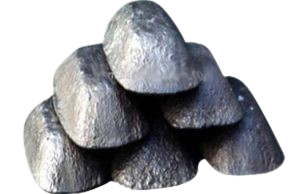Pig iron is a crucial intermediate product in steelmaking, produced by smelting iron ore with coke in a blast furnace. It serves as the primary input for most steel production worldwide, except for electric arc furnace operations that primarily use scrap steel.
This article provides an in-depth analysis of the pig iron price trend, offering quarterly insights, supply-demand dynamics, and forecasts for 2024 and 2025. It also highlights key global suppliers and market drivers to help stakeholders make informed decisions.
👉 👉 👉 Please Submit Your Query for Pig Iron Price Trend, forecast and market analysis: https://www.price-watch.ai/contact/
Global Pig Iron Production Overview
China
China continues to dominate global pig iron production, accounting for approximately 62.4% of the global total in the first quarter of 2025. Despite slower growth due to economic challenges, China’s output reached 216.28 million tons in January-March, showing a modest 0.8% increase year-over-year.
India
India maintained its position as the second-largest pig iron producer globally, with first-quarter output of 38.03 million tons, a robust 6.2% increase compared to the same period in 2024.
Other Key Producers
- Brazil: Produced 7.6 million tons in 2024, maintaining its position as a significant global supplier.
- Russia: Produced 6 million tons in 2024, continuing to be a major player in the market.
Pig Iron Price Trend Analysis 2025
India
In March 2025, India’s pig iron prices reached a five-month high, propelled by increased export demand, supply constraints, and rising raw material costs. Prices in Durgapur climbed to INR 35,800/tonne ($413/ton), while Tata Metaliks increased prices to INR 40,000/tonne ($462/ton) exw-Kharagpur.
Brazil
Brazilian pig iron shipments rose to $430 per ton by the end of February 2025, up from $405 per ton in January, reflecting a recovery following previous declines.
Global Outlook
Global pig iron prices experienced a notable rise in prices across several major regions, reflecting a recovery following previous declines.
Supply Chain Dynamics and Market Drivers
Export Demand
Increased export shipments, particularly to Southeast Asia and the Middle East, have contributed to the rise in pig iron prices. Notably, Vedanta concluded deals for around 100,000 tons in March, primarily to Southeast Asian markets, while Welspun’s bookings touched nearly 35,500 tons, targeting Middle Eastern buyers.
Raw Material Costs
Rising global scrap prices and increased procurement of domestic ports due to price advantages have influenced pig iron prices. Additionally, domestic met coke prices climbed significantly following the imposition of import quotas in December 2024, pushing up production costs for pig iron producers.
Production Constraints
Domestic pig iron availability tightened in March due to production disruptions at key integrated steel plants, compounded by seasonal factors. Increased export activity from major players and limited supply from auctions have further impacted domestic supply.
Forecast for 2024–2025
- India: Prices are expected to remain elevated due to strong export demand and supply constraints.
- Brazil: Prices may stabilize as production increases and export demand balances.
- China: Prices may face downward pressure due to domestic economic challenges and reduced demand from the property sector.
Key Global Pig Iron Suppliers
- China: Dominates global production, accounting for approximately 62.4% of the global total in the first quarter of 2025.
- India: Maintains its position as the second-largest pig iron producer globally, with first-quarter output of 38.03 million tons.
- Brazil: Produced 7.6 million tons in 2024, maintaining its position as a significant global supplier.
- Russia: Produced 6 million tons in 2024, continuing to be a major player in the market.
- Ukraine: Produced 3.3 million tons in 2024, contributing to global supply.
Final Words
The pig iron market in 2024 and 2025 is characterized by rising prices driven by increased export demand, supply constraints, and rising raw material costs. Key producers like China, India, Brazil, Russia, and Ukraine continue to play significant roles in the global supply chain. Stakeholders should monitor these dynamics closely to navigate the evolving market landscape.
Also Read: Antimony Price Trend Analysis: 2024–2025 Forecast, Supply Chain 2025

